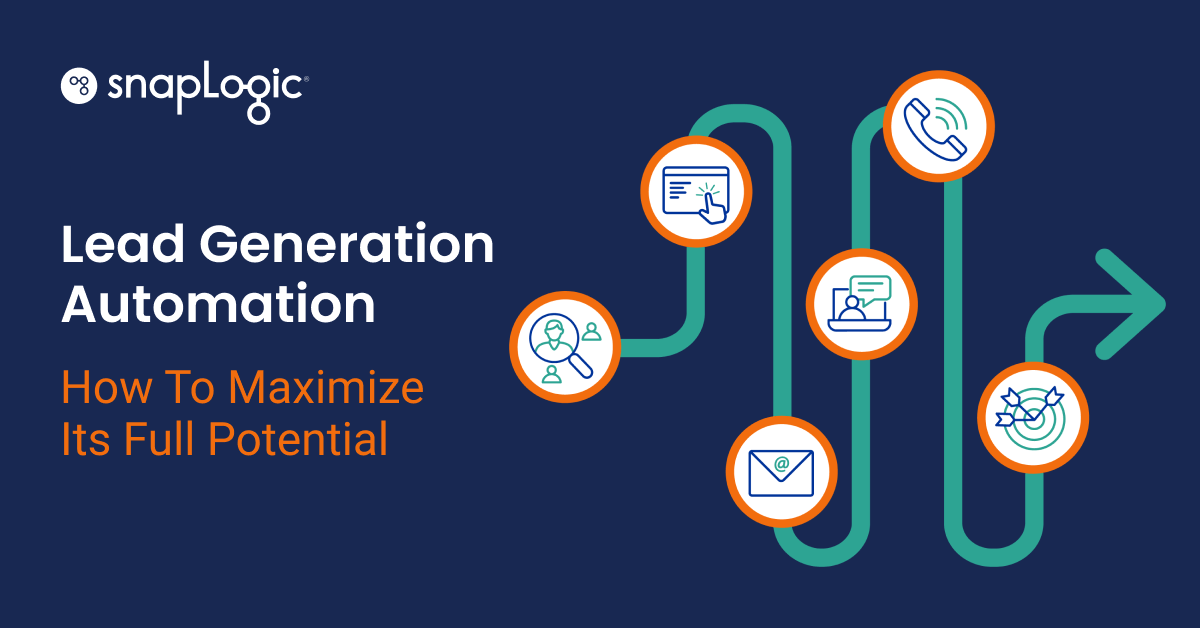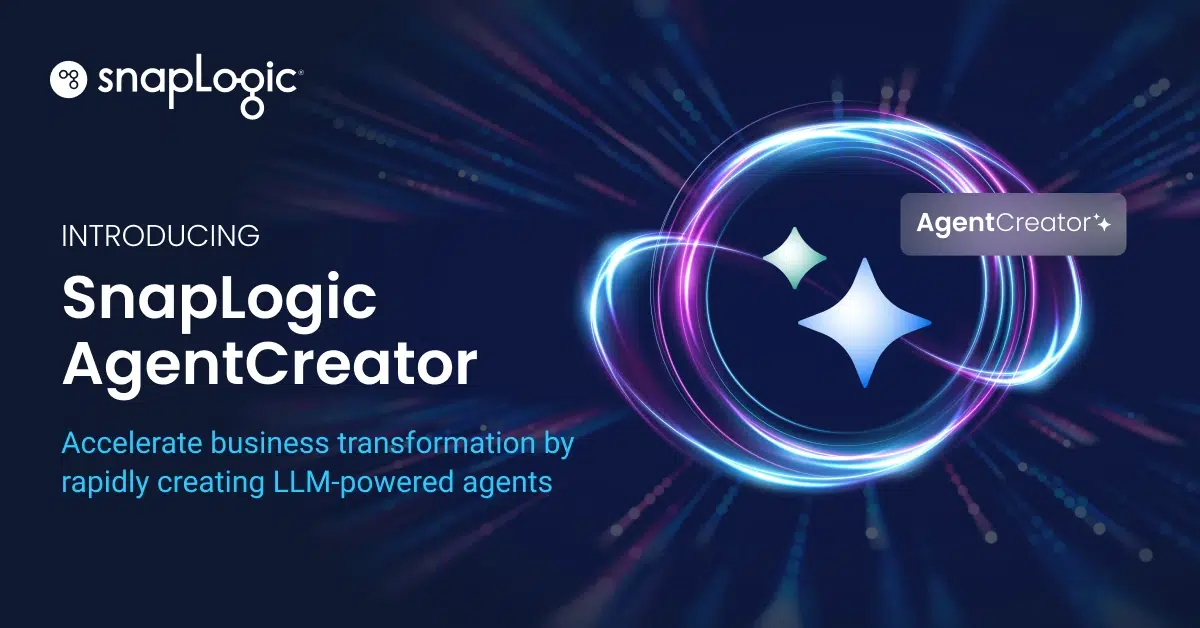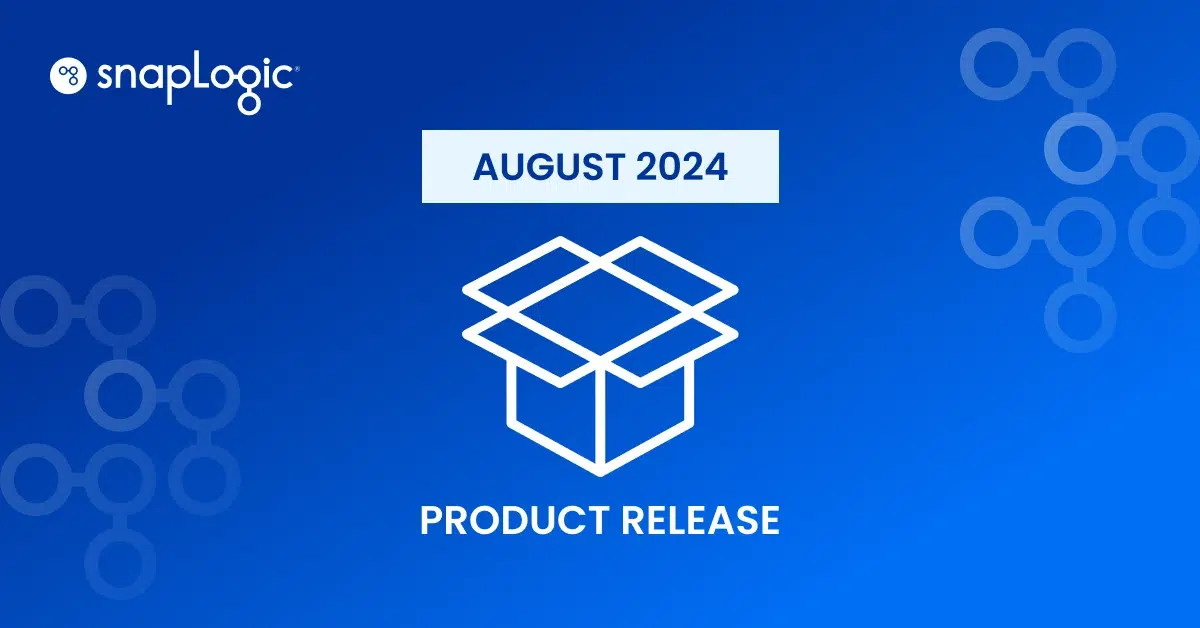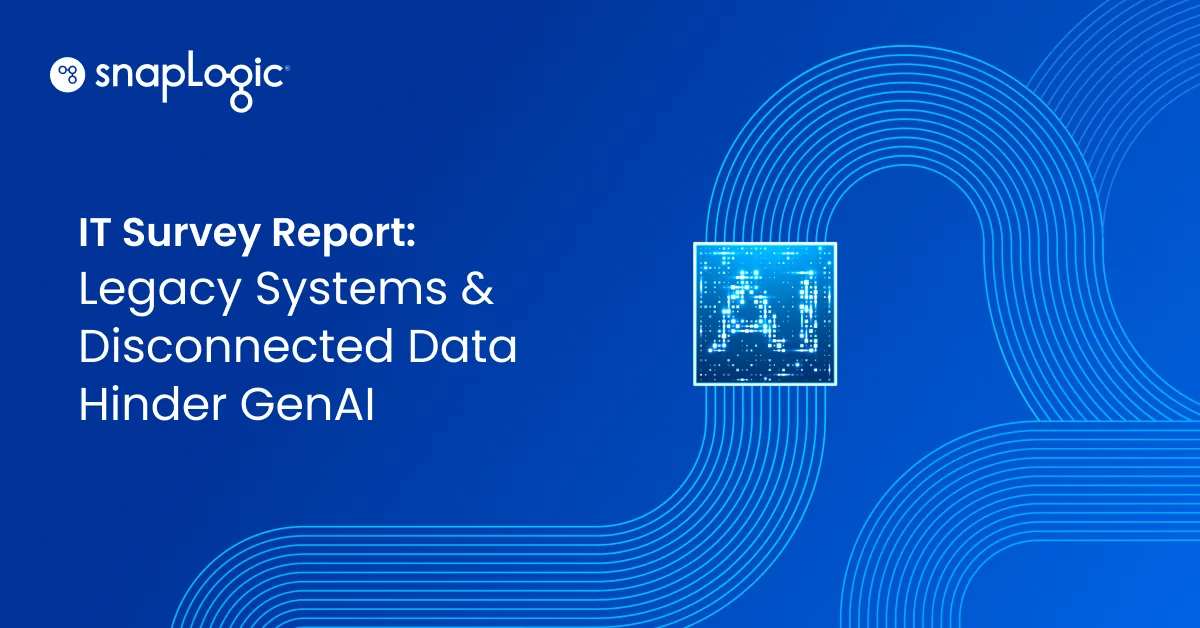For B2B and some B2C companies, leads are the critical input required to power the rest of the sales pipeline. To handle the challenge of generating these leads, many marketers and sales reps turn to automation. In a DemandSpring report, 50% of respondents reported that they wanted to boost lead generation with marketing automation.
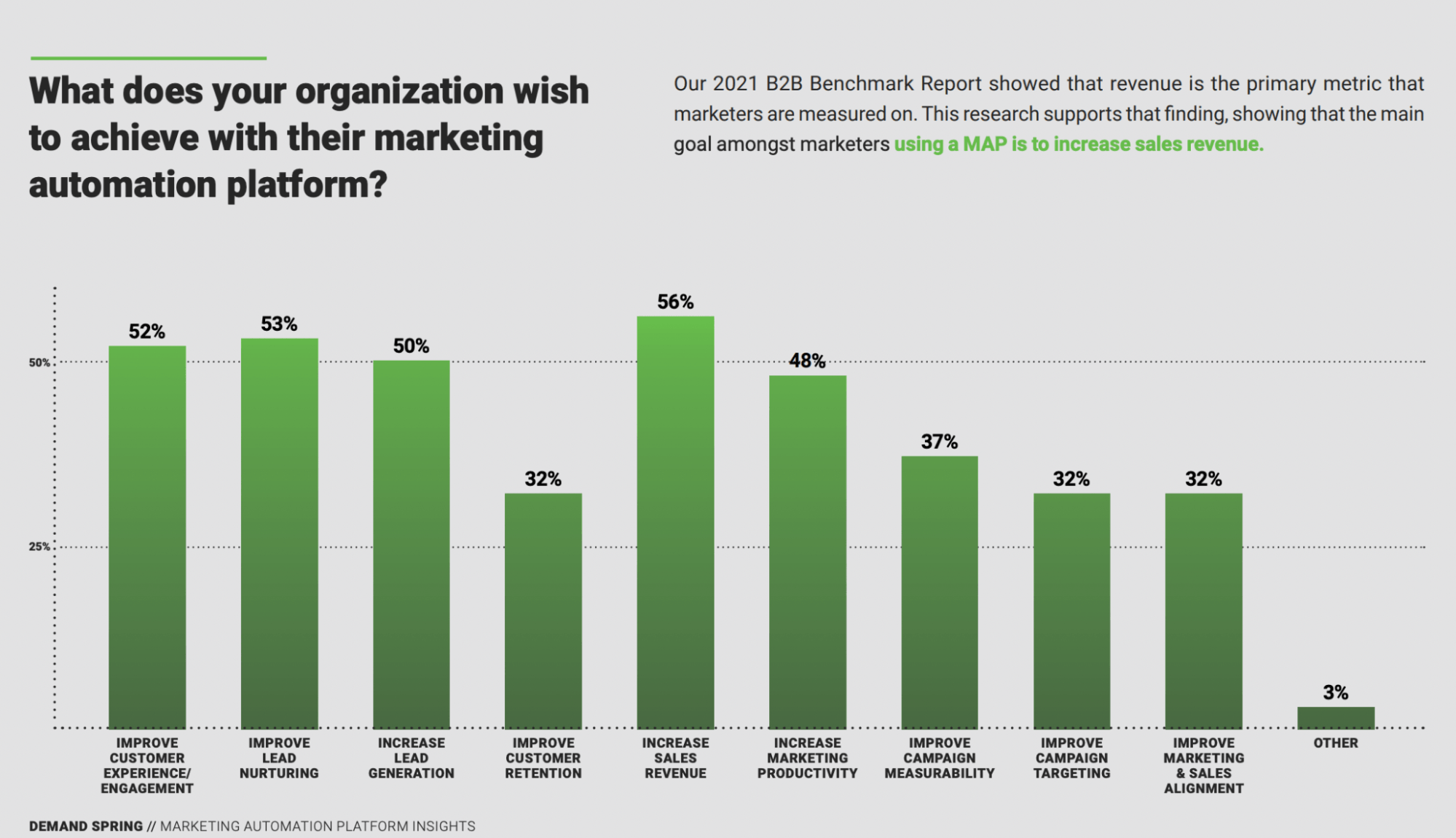
The investment is paying off. A recent Ascend2 survey found that 86% of sales teams deem their marketing automation efforts somewhat successful (64%) or very successful (22%). Of course, with over 625 vendors in the lead generation software vertical, there are many avenues and sales channels to pursue. How do you know which automations are the best for your business? We’ll walk you through three of the highest ROI lead generation automation opportunities in 2022.
What Is Lead Generation Automation?
Lead generation automation is the use of software to perform tasks that help with attracting leads and capturing their information.
Keep in mind, lead generation is distinct from inbound marketing. The goal isn’t just to capture traffic but to transform anonymous visits into identified prospects.
Let’s say any time a potential customer fills out a “Request a quote” form on your website, they receive an automatic email from a sales representative. The welcome message contains a link to some scheduling software so the lead can book a meeting with the sales rep. In this instance, there are several lead generation automations at play: the trigger email, the lead routing/matching in the CRM, and the real-time updates to the sales representative’s schedule.
Why Is Lead Generation Automation Important?
According to an automation survey from Marketo and Ascend2, 91% of those who use marketing automation software say doing so is “very important” to their program’s overall success. But what makes automation so effective?
Automation Saves Time and Money
When marketing and sales reps don’t have to perform simple repetitive work, they free up time for more high-value, complex work. Collectively, these teams can provide more work overall because the automations stand in for extra team members, synthetically increasing the team’s bandwidth.
Let’s say you automatically send new leads an email to schedule a call. If the lead doesn’t respond within a few days, the automation triggers a follow-up email to check in. These simple automations alone handle a lot of logistical legwork: making contact with each lead, noticing when they haven’t replied, and following up. Although that legwork could easily become a full-time job, the automations stand in for hiring extra team members.
Automation Makes Personalization Easier
To nurture leads, marketing and sales reps have to tailor their messaging for each person’s goals and pain points. But how do you personalize communication when you’re dealing with hundreds, if not thousands, of leads?
Automation empowers teams to scale personalization instead of manually tailoring each message.
Say a prospect downloads an eBook addressing the concerns of a specific audience. That lead can be routed into a related audience segment for automated email campaigns. Even though everyone in the segment receives the same series of emails, the content feels personalized because it only addresses the needs and concerns that are relevant to that segment.
Automation Reduces Human Error
Automations don’t take sick days or have “off” days. They don’t get bored or fatigued by repetitive work. They perform tasks the same way every time — they never forget steps, attempt shortcuts, or try different processes.
When you use lead generation automations, you cut out human error. Account hand-offs aren’t saddled with the risk of losing critical knowledge about the lead, and tasks like email follow-up don’t get dropped if there’s a sudden departure.
3 Ways to Automate Lead Generation
There are countless automations to support your lead generation efforts in 2022 — too many to list in a single article. If you’re wondering how to take full advantage of lead generation automation, start with these three high-impact areas where automations can ease your workload and deliver results.
Pop Ups
Yes, pop ups still convert in 2022. No, that doesn’t mean you can overwhelm your users with pop ups. But if you set up relevant pop ups that trigger at just the right times, you can engage more visitors and convert them into leads.
A basic pop-up automation tool should offer design features and trigger set-ups, but there are variations when it comes to the number of pop up campaigns you can run, the user behaviors you can track, and the ease of integration with other software. A few pop-up automation tools we recommend are:
- Optimonk – With 300 design templates based on different use cases like shopping cart abandonment or exit intent, Optimonk makes it easy to tailor pop ups to the desired action.
- Sleeknote – Sleeknote has a robust set of features that includes A/B testing.
- Justuno – Justuno is an AI-based pop up tool that can personalize messages according to each user’s behavior.
Once you’ve chosen a tool, create a welcome pop up that appears as soon as a new visitor lands on your site. Make sure you’re tracking cookies properly so the welcome message doesn’t trigger every time your visitor clicks to a new page on your site.
Build an exit intent pop up, too, to capture leads who are about to leave your site. This final message triggers when the user’s mouse steers toward the upper righthand corner of your website, signaling they’re about to close the page. For maximum impact, make your final offer in this pop-up more enticing than any offer that came before.
Err on the side of unobtrusiveness with pop ups. Provide your visitors with a clear way to exit every pop up, and don’t ping people with the same pop up again once they’ve closed it. You might also give users an option to minimize the pop up so they can revisit it whenever they need it.
Consider the ideal experience in a brick and mortar: it’s great to know a friendly face can help you if you need it, but if you say, “I’m just looking, thanks,” the sales rep won’t keep pestering you.
Personalized Website Content
According to Mckinsey, personalized website content can reduce customer acquisition costs by as much as 50%. The more you can maintain the user’s interest with content they find relevant and salient, the better your chances of converting them to a lead.
But it’s not feasible to manually tailor your site content in real time for individual users, so how do you personalize their site experience? With automations that tailor the content in real time to different user behaviors.
To get started with dynamic content, survey the scene first and develop a basic understanding of the personalization tools that exist. We recommend focusing on two categories in particular: dynamic landing pages and recommendation engines.
Dynamic landing pages change according to user actions, updating headlines to match the user’s keyword search or sharing different CTAs with new vs. returning visitors. You can also trigger dynamic content when users land on certain pages.
Recommendation engines trigger products or content based on user behavior. For leads, use these tools to recommend blog posts and other content based on their visited pages. If a recommended post catches the user’s attention, you’ve bought yourself an extra chance to turn them into a lead.
Segmented Email Campaigns
When a lead signals interest by offering their information, they become a warm lead. And warm email outreach offers some of the best returns of any sales or marketing channel: $36 for every dollar spent.
To choose an email marketing platform, try a few free trials or demos. We recommend Mailchimp, Salesforce Email Studio, and ActiveCampaign.
Learn what it’s like to build and send emails, run automations, and segment your audience on different platforms. Which platform feels most intuitive? There is no universal “best” in this category; the best email platform is the one your team can work with.
Once you’ve picked a platform, build or select just one or two warm outreach templates for leads. This helps you scale your outreach efforts by removing arduous design decision-making from the process.
From there, create segmented automated campaigns that take different lead personas on personalized journeys.
To segment your leads, you have a few options. You can route the lead upon capture if your form asks the lead to identify pain points or the scope of their need (just be careful not to ask for too much extra information because it hinders conversion).
Alternatively, you can run webinars or offer ebooks that speak to different segments: their industry, goals, or pain points. When the visitor fills out the form to attend a webinar or download a resource, you can route them to the segment that connects them to additional relevant information.
Next Steps: Lead Generation, SnapLogic, and You
Are you sold on lead generation automation but worried about managing all the extra tools? SnapLogic lets you manage all of your automations from a single platform.
What’s more, our low-code/no-code software allows your sales team to build out their lead automations near-immediately — no need to harass IT every time you need to integrate a tool. Download SnapLogic’s Pipeline eCatalog for Marketing Operations to learn more.
Ready to get started? Request a live demo today.



